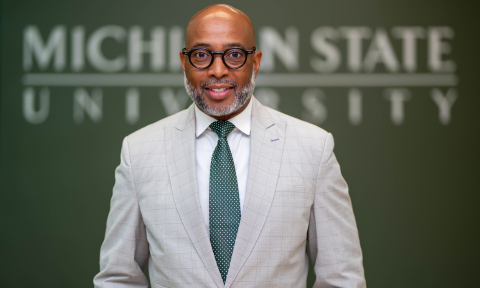Education News from the Michigan Capitol (July)
Revisiting Stalled State K-12 Funding Debates
As predicted in the June 2025 Capitol Perspectives, July was more interesting for the Michigan Legislature’s lack of progress on next year’s School Aid Fund than for any developments that did occur. Most in the headlines was state lawmakers’ failure “to pass the School Aid budget before the[ir] July 1 deadline – breaking a law they enacted” to ensure that school districts, who have fiscal years starting on July 1 and who “are required by law to pass balanced budgets by June 30,” have sufficient clarity about what resources they can anticipate receiving from the Michigan Legislature (MASA 7/3 Legislative Update; Michigan Advance; WXYZ). Notably, the Michigan House and Senate’s inability to reach consensus was not without any preceding actions. For example, before adjourning, the Michigan House put forth “a third version of the School Aid Fund budget” (MASA 7/3 Legislative Update). Though, this measure was “widely viewed as a political move,” and “ultimately, the House did not take up the bill” (MASA 7/3 Legislative Update).
In response to the state’s lack of budget progress, a coalition of education associations released a statement right as the calendar turned to July, arguing that the delay was forcing districts to adopt budgets “based on guesswork.” Additionally, at the end of the month, the Michigan Alliance for Student Opportunity hosted “a roundtable news conference” focused on “the real-time impact to Michigan schools while they wait for a budget deal between the state’s House, Senate and governor’s office” (Michigan Advance). Here, attendees warned of preemptive “layoffs and reductions in school services,” risking course cancellations, larger class sizes, and decreased student supports and programming, “due to the conflict between the House and Senate” (Michigan Advance). Further, some administrators noted that they “are not renewing contracts or adding new positions” even if they are not yet implementing “widespread hiring freezes” (WSBT 22). More broadly, roundtable attendees discussing the Michigan Legislature’s budgetary process critiqued how education has been used as “a bargaining chip” in road funding debates and demanded a swift resolution to the impasse (Michigan Advance).
Concerning the prospects of state leaders coming to a prompt agreement on the FY 2026 School Aid Fund and state budget writ large, there are fears that a “deal is a long way out...due to a breakdown in negotiations between...the Republican-controlled House and the Democratic-led Senate” (Michigan Advance). In fact, the Michigan House has yet to pass “a full budget funding the whole of Michigan government,” and the Michigan Senate “has not yet delivered a road funding plan” (Michigan Advance). As part of the cause for the delay, there are deep differences in how these actors would fund schools, as seen in the Michigan House’s proposal, which, among other things, would fund private schools and end “universal school meals...touted by Whitmer” (The Detroit Free Press). With that, additional gaps between the priorities conveyed in Governor Whitmer's executive budget proposal, the Michigan Senate’s vision in SB 166, the Michigan House’s framework in HB 4577, and the Michigan House’s back-up plan in HB 4162, which it approved in March to fund “bare bones” necessities, are summarized in the June 2025 Capitol Perspectives (Chalkbeat Detroit; MASA 3/7 Legislative Update).
Over the next few weeks, district leaders will continue monitoring whether the Michigan Legislature and Governor Whitmer can come to terms on school funding. It is possible that delays persist, and because of the extent to which state inaction has “bedeviled the [funding] process,” many school “boards will [likely] be changing passed budgets later” (The Detroit Free Press). After all, these entities have been forced to pass their FY 2026 financial plans with incomplete information about what funding they can anticipate, along with how these resources will be structured and allocated. To revisit how state lawmakers have gotten to this stalemate, readers can review the June 2025, May 2025, March 2025, February 2025, and January 2025 Capitol Perspectives.
Exploring Federal Education Policy Developments
While the Michigan Legislature might be in a bit of a summer policy lull, the federal government is ablaze with federal K-12 updates. This state of affairs is not particularly surprising, given the extensive efforts by President Trump since his inauguration to “profoundly reshap[e] federal education policy” (NPR). Specifically, in July, the U.S. Department of Education and President Trump injected significant uncertainty into whether billions of dollars of previously-authorized funding would be allocated to school districts nationwide, the U.S. Congress advanced a core goal of school choice advocates in the One Big Beautiful Bill Act, and the U.S. Supreme Court weighed into whether the U.S. Department of Education can be drastically restructured, starting with extensive layoffs.
The first of those policy considerations goes back to July 1, when the federal government was scheduled to release “nearly $4.8 billion” in “FY25 allocations for several key programs – including Title I, Part C; Title II, Part A; Title III; and Title IV, Part B” (MASA 7/3 Legislative Update). Despite Congress’ past approval of these funds, the U.S. Department of Education withheld these resources for “migrant education,” “services for English learners,” “staff professional development,” “before- and after-school programs,” and “academic enrichment” (Chalkbeat Detroit). In doing so, Trump administration representatives defended the move as “part of an ongoing programmatic review of education funding” to ensure that “grant programs [are not being] grossly misused to subsidize a radical leftwing agenda” (Chalkbeat Detroit). Responding to this federal pause, impacted entities warned that it, especially in the context of Michigan’s “continued [budgetary] delay,” threatened “under-resourced districts” and risked schools “planning to offer fewer resources to students” (Michigan Advance).
Hoping to force the U.S. Department of Education’s hand, “24 states [including Michigan] and the District of Columbia” sued the Trump administration, indicating that they were already faced with the choice of whether to lay off “hundreds of educators and staffers” due to this funding review (The Detroit Free Press). Additionally, perhaps appealing to the political aspirations of the Trump administration, a collection of Republican Senators released a letter calling for the release of these funds “to support programs that enjoy longstanding, bipartisan support.” Toward the end of July, the U.S. Department of Education opted to “unfreeze” these funds (Michigan Public Radio). That said, there was no reneging on the administration’s “FY 2026 budget proposal,” which envisions “$12 billion in education cuts, significant cuts to health and nutrition programs, and shifts in financial responsibilities to states” (MASA 6/6 Legislative Update; June 2025 Capitol Perspectives). As such, state and Congressional efforts to resist these federal funding disruptions might end up marking a pyrrhic, or at least hollow, victory.
Regarding Congress’ back-and-forth affair concerning how it would approach school choice policy, while a “federal voucher program...was initially removed” from the One Big Beautiful Bill Act, it was “reinstated with several key changes” before this legislation was passed and enacted on the 4th of July (MASA 7/3 Legislative Update; June 2025 Capitol Perspectives). Ultimately, through this sweeping legislative effort, the federal government “approved the first national school voucher plan, which will help...families pay for private school and other educational expenses,” starting in 2027 (The New York Times; PBS News). It does so by “rel[ying] on U.S. taxpayers to make donations to nonprofits [who “grant scholarships to students”], in exchange for a credit on their federal tax bills” (The New York Times). Specifically, “individuals would get a dollar-for-dollar tax credit up to $1,700 when they give to a nonprofit that offers education scholarships...for tuition and other educational expenses, including for private or religious schooling” (PBS News). The final version of this policy removed “the cap on donation amounts eligible for a tax credit,” made it “permanent,” deleted “a provision preventing federal control over religious or private schools,” and shifted to an “opt-in” structure, “meaning states can voluntarily establish a voucher nonprofit system without any federal mandate to do so” (MASA 7/3 Legislative Update).
Supporters of the new system, including “private-education advocates, religious conservatives and some parents,” called the move “the biggest advancement of [their] goal...ever” and said it would help “families...have the freedom to choose the best K-12 school option for their children and get help paying for it” (The New York Times). Conversely, critics have warned that the measure will allow “tax dollars [to] be siphoned away” from traditional public schools toward a vouchers-based system that “harm[s] student achievement,” “lack[s] any oversight,” and disproportionately benefits “wealthy families whose children already attend private schools” (MEA Voice). Importantly, the effort’s reach will be shaped “by the number of donations that nonprofits are able to drum up” and whether “states...choose to participate” following Congress' decision to build the system around a state opt-in provision (The New York Times).
Lastly, the U.S. Supreme Court was in the federal education policy spotlight. Previously, the May 2025 Capitol Perspectives discussed how “a federal district court in Massachusetts issued a preliminary injunction” that prevented “the U.S. Department of Education from proceeding with [its] major staffing and oversight changes” (MASA 5/23 Legislative Update). In July, “the U.S. Supreme Court ruled...that it would allow the Trump administration to resume dismantling the U.S. Department of Education,” staying a preliminary injunction that told administration leaders “to reinstate many of the nearly 1,400 workers...laid off” in a 6-3 explanation-less decision (NPR; NBC News). While this action just involved whether judges could block the actions of the U.S. Department of Education “as the case continues to work its way through the lower courts,” the decision “deals a serious blow to the states and…districts who had filed suit and who worry that, without an injunction, much of the damage done to the department before a final ruling will be impossible to reverse” (NPR).
In support of the decision, U.S. Secretary of Education Linda McMahon commented that “the Supreme Court again confirmed the obvious: the President of the United States, as the head of the Executive Branch, has the ultimate authority to make decisions about staffing levels, administrative organization, and day-to-day operations of federal agencies” (AP). On the other hand, dissenters said that the Trump administration’s actions go far beyond streamlining the department and instead imperil its ability “to carry out responsibilities required by Congress, including duties to support special education, distribute financial aid and enforce civil rights laws” (AP). Regardless of the merits of these various actions and how the courts view this case when they fully consider it, the Trump administration’s “campaign to...make big changes in this country around education” was on full display in July (PBS News).
Debating the Structure of Michigan Education Governance
In 2024, the State of Michigan “commissioned” a report to study how “to improve public education” via governance reforms, thanks to “funding allocated by the state Legislature” (The Detroit Free Press). This July, the resultant study, “K-12 Education Governance in Michigan,” was released by the University of Michigan’s Youth Policy Lab. It uses “statistical analyses of administrative data,” “existing academic papers, policy reports and government documents,” and “interview and survey responses” (The Daily Mining Gazette). Centrally, the report argues that “Michigan should give the governor more power...and shrink local control,” and it calls (1) to “give the governor greater authority” while “maintain[ing] guardrails to discourage politicization,” (2) to “restructure the State Board of Education” and “allow [the] governor to appoint at least some members,” (3) to “give the governor more control over the choice of the state superintendent,” (4) to “empower [the] Michigan Department of Education to provide guidance and support to local districts,” (5) to “increase the power of intermediate school districts,” (6) to “implement initiatives to improve literacy and math,” and (7) to “invest more in schools” (Bridge). Thematically, the proposed reforms seek to reduce the number of “cooks in the [proverbial education policy] kitchen” and “creat[e] a consistent strategy to improve academics” (The Detroit Free Press).
In practice, much of the paper was “hotly contested” (The Daily Mining Gazette). For instance, Dr. Michael Rice, Michigan State Superintendent, “immediately dismissed the report’s conclusions,” saying that it “offers no significant new research or fresh insight” (Bridge). Likewise, Michigan State Board of Education President Pamela Pugh was skeptical of some of the report’s findings, including ones to empower the governor further, positing that this model “would definitely bring politics to the table” (The Daily Mining Gazette). Those concerns notwithstanding, there were some areas of consensus between the reports’ authors and some members of the State Board of Education and the Michigan Department of Education, including the need for added school funding, calls to “reduce the reliance on categorical funding,” demands for “stronger oversight over” districts’ curriculum, and aspirations of “greater financial accountability for charter schools” (The Daily Mining Gazette).
Going forward, there are some places where the report’s recommendations could be debated by policymakers. First, Michigan lawmakers previously introduced HJR E, which “proposes a constitutional amendment requiring the State Superintendent [to] be appointed by the governor [rather than the State Board of Education], with Senate approval, beginning January 2027,” and HB 4148, which shifts “the selection process for State Board of Education members to a rotating nomination schedule” based on districts (June 2025 Capitol Perspectives; April 2025 Capitol Perspectives; MASA 3/21 Legislative Update; MASA 3/14 Legislative Update). While these reforms have been stalled in the Michigan House, this new press on governance structures could spark their reconsideration. Also, the conversation could be advanced by State Superintendent Rice’s decision to retire, effective October 3, and plans, announced by the entity that the Michigan State Board of Education hired “to assist in conducting the search” for the next state superintendent, to find a successor by September 4 (June 2025 Capitol Perspectives; April 2025 Capitol Perspectives; Chalkbeat Detroit; Chalkbeat Detroit). Finally, these threads are likely to resurface in the 2026 election as “many candidates who have announced plans to run for governor...are making education reform a key to their campaigns” (Bridge). Whenever and wherever these discussions reemerge, they will be summarized and analyzed in future editions of Capitol Perspectives.
For questions or more information, please contact Tyler Thur in the Office of K-12 Outreach at thurtyle@msu.edu.




